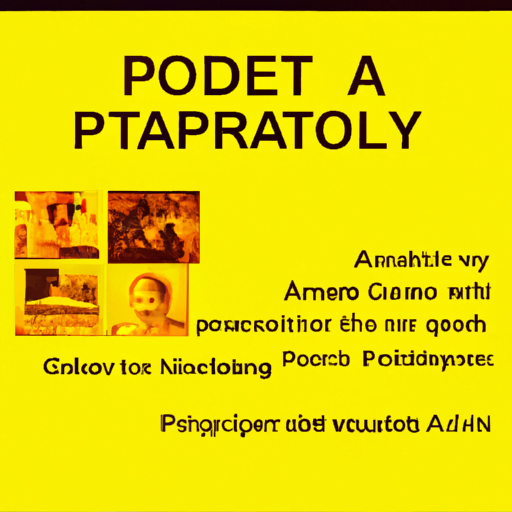
-
Table of Contents
- The Role of Typography in Nonprofit Campaigns
- The Power of Typography
- Typography Best Practices for Nonprofit Campaigns
- 1. Choose Fonts Wisely
- 2. Use Typography to Evoke Emotions
- 3. Establish Visual Hierarchy
- Case Studies: Effective Use of Typography in Nonprofit Campaigns
- 1. Charity: Water
- 2. Amnesty International
- The Impact of Typography: Statistics and Research
- Conclusion
The Role of Typography in Nonprofit Campaigns

Typography plays a crucial role in nonprofit campaigns, as it has the power to evoke emotions, convey messages, and create a lasting impact on the audience. In this article, we will explore the significance of typography in nonprofit campaigns and how it can be effectively utilized to maximize the reach and effectiveness of these campaigns.
The Power of Typography
Typography is more than just selecting a font or arranging letters; it is a powerful tool that can shape the perception of a nonprofit campaign. The right typography can capture attention, create a sense of urgency, and inspire action. Here are some key reasons why typography is essential in nonprofit campaigns:
- Visual Hierarchy: Typography helps establish a visual hierarchy, guiding the audience’s attention to the most important elements of the campaign. By using different font sizes, weights, and styles, nonprofits can emphasize key messages and calls to action.
- Brand Identity: Typography plays a crucial role in establishing and maintaining a nonprofit’s brand identity. Consistent use of typography across various campaigns helps create recognition and builds trust among the audience.
- Emotional Connection: Typography has the power to evoke emotions and create a connection with the audience. The choice of fonts, colors, and styles can convey the tone and personality of the campaign, making it relatable and memorable.
- Readability: Clear and legible typography ensures that the campaign’s message is easily understood by the audience. It is important to choose fonts that are easy to read, especially when conveying complex information or statistics.
Typography Best Practices for Nonprofit Campaigns
Now that we understand the importance of typography in nonprofit campaigns, let’s explore some best practices that can help maximize its impact:
1. Choose Fonts Wisely
The choice of fonts can significantly impact the effectiveness of a nonprofit campaign. Here are some considerations when selecting fonts:
- Legibility: Prioritize legibility over creativity. Ensure that the fonts are easy to read, even at smaller sizes.
- Consistency: Maintain consistency in font usage across different platforms and campaigns to reinforce brand identity.
- Contrast: Use contrasting fonts to create visual interest and highlight important information.
2. Use Typography to Evoke Emotions
Typography can evoke emotions and create a connection with the audience. Consider the following techniques:
- Font Styles: Different font styles, such as bold, italic, or handwritten, can convey different emotions. For example, a bold font may create a sense of urgency, while a handwritten font may evoke a personal and intimate feeling.
- Color Psychology: Combine typography with appropriate colors to enhance emotional impact. For instance, warm colors like red or orange can evoke passion and urgency, while cool colors like blue or green can create a sense of calmness and trust.
3. Establish Visual Hierarchy
Creating a clear visual hierarchy ensures that the audience’s attention is directed towards the most important elements of the campaign. Consider the following techniques:
- Font Size: Use larger font sizes for headlines and important messages to make them stand out.
- Font Weight: Utilize different font weights, such as bold or light, to emphasize key information.
- Whitespace: Incorporate whitespace strategically to separate different sections and improve readability.
Case Studies: Effective Use of Typography in Nonprofit Campaigns
Let’s examine some real-world examples of nonprofit campaigns that effectively utilized typography to create a strong impact:
1. Charity: Water
Charity: Water, a nonprofit organization focused on providing clean water to people in need, effectively uses typography to convey their mission. They use a bold and clean font for their logo and headlines, creating a sense of urgency and importance. The typography is complemented by powerful imagery, resulting in a visually compelling campaign that resonates with the audience.
2. Amnesty International
Amnesty International, a global human rights organization, uses typography to create a strong emotional connection with their audience. They often incorporate handwritten fonts in their campaigns, evoking a personal and intimate feeling. By combining typography with impactful images and stories, Amnesty International effectively communicates their message and inspires action.
The Impact of Typography: Statistics and Research
Research and statistics further emphasize the importance of typography in nonprofit campaigns:
- A study conducted by the University of Michigan found that typography significantly influences the perception of credibility and trustworthiness in nonprofit organizations.
- According to a survey by Nonprofit Hub, 92% of respondents agreed that typography plays a crucial role in conveying a nonprofit’s mission and values.
- In a study by Stanford University, participants were more likely to remember information when it was presented in a clear and legible font compared to a difficult-to-read font.
Conclusion
Typography is a powerful tool that can make or break a nonprofit campaign. By carefully selecting fonts, establishing visual hierarchy, and evoking emotions, nonprofits can create impactful campaigns that resonate with their audience. Remember to prioritize legibility, maintain consistency, and utilize typography to convey the mission and values of the organization. With the right typography, nonprofits can effectively communicate their message, inspire action, and make a lasting impact on their cause.
